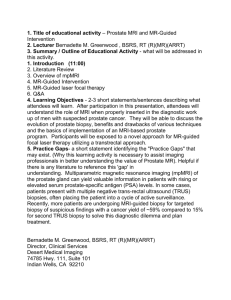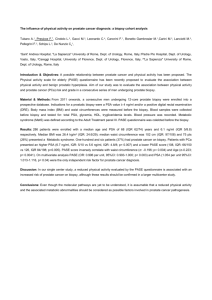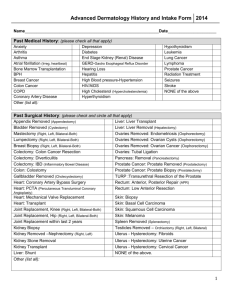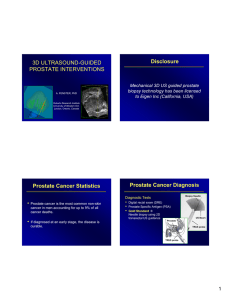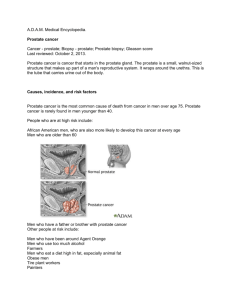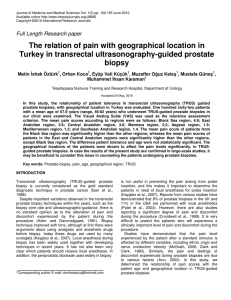Plasma circulating miRNAs: a new potential biomarker for prostate
advertisement
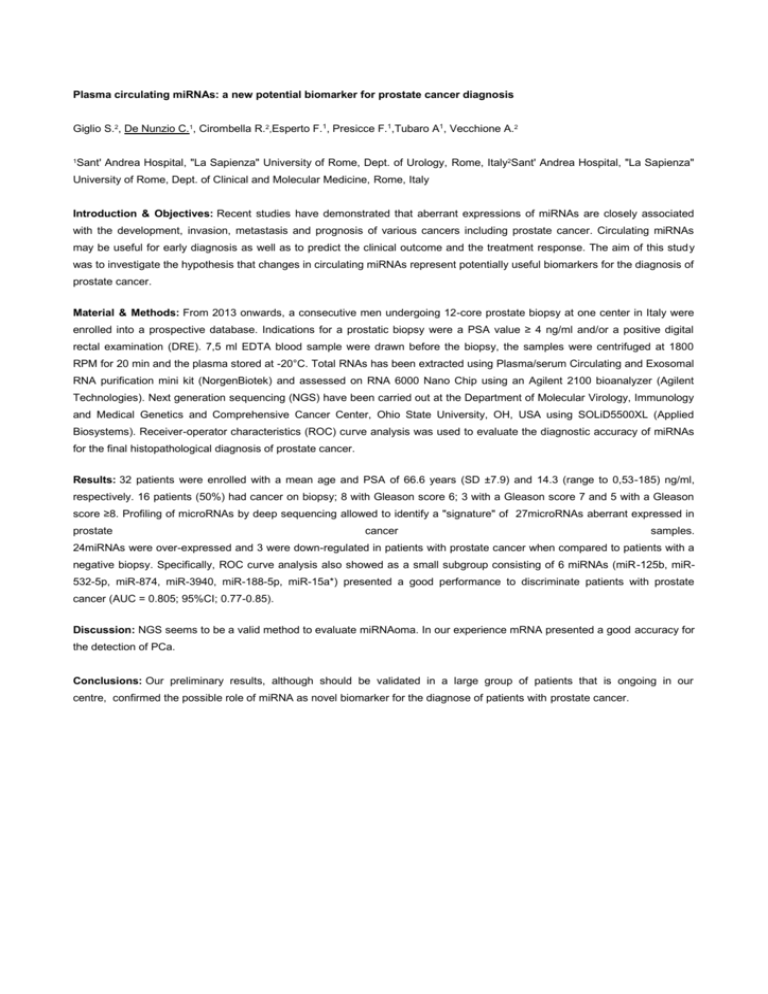
Plasma circulating miRNAs: a new potential biomarker for prostate cancer diagnosis Giglio S.2, De Nunzio C.1, Cirombella R.2,Esperto F.1, Presicce F.1,Tubaro A1, Vecchione A.2 1 Sant' Andrea Hospital, "La Sapienza" University of Rome, Dept. of Urology, Rome, Italy2Sant' Andrea Hospital, "La Sapienza" University of Rome, Dept. of Clinical and Molecular Medicine, Rome, Italy Introduction & Objectives: Recent studies have demonstrated that aberrant expressions of miRNAs are closely associated with the development, invasion, metastasis and prognosis of various cancers including prostate cancer. Circulating miRNAs may be useful for early diagnosis as well as to predict the clinical outcome and the treatment response. The aim of this study was to investigate the hypothesis that changes in circulating miRNAs represent potentially useful biomarkers for the diagnosis of prostate cancer. Material & Methods: From 2013 onwards, a consecutive men undergoing 12-core prostate biopsy at one center in Italy were enrolled into a prospective database. Indications for a prostatic biopsy were a PSA value ≥ 4 ng/ml and/or a positive digital rectal examination (DRE). 7,5 ml EDTA blood sample were drawn before the biopsy, the samples were centrifuged at 1800 RPM for 20 min and the plasma stored at -20°C. Total RNAs has been extracted using Plasma/serum Circulating and Exosomal RNA purification mini kit (NorgenBiotek) and assessed on RNA 6000 Nano Chip using an Agilent 2100 bioanalyzer (Agilent Technologies). Next generation sequencing (NGS) have been carried out at the Department of Molecular Virology, Immunology and Medical Genetics and Comprehensive Cancer Center, Ohio State University, OH, USA using SOLiD5500XL (Applied Biosystems). Receiver-operator characteristics (ROC) curve analysis was used to evaluate the diagnostic accuracy of miRNAs for the final histopathological diagnosis of prostate cancer. Results: 32 patients were enrolled with a mean age and PSA of 66.6 years (SD ±7.9) and 14.3 (range to 0,53-185) ng/ml, respectively. 16 patients (50%) had cancer on biopsy; 8 with Gleason score 6; 3 with a Gleason score 7 and 5 with a Gleason score ≥8. Profiling of microRNAs by deep sequencing allowed to identify a "signature" of 27microRNAs aberrant expressed in prostate cancer samples. 24miRNAs were over-expressed and 3 were down-regulated in patients with prostate cancer when compared to patients with a negative biopsy. Specifically, ROC curve analysis also showed as a small subgroup consisting of 6 miRNAs (miR-125b, miR532-5p, miR-874, miR-3940, miR-188-5p, miR-15a*) presented a good performance to discriminate patients with prostate cancer (AUC = 0.805; 95%CI; 0.77-0.85). Discussion: NGS seems to be a valid method to evaluate miRNAoma. In our experience mRNA presented a good accuracy for the detection of PCa. Conclusions: Our preliminary results, although should be validated in a large group of patients that is ongoing in our centre, confirmed the possible role of miRNA as novel biomarker for the diagnose of patients with prostate cancer.
